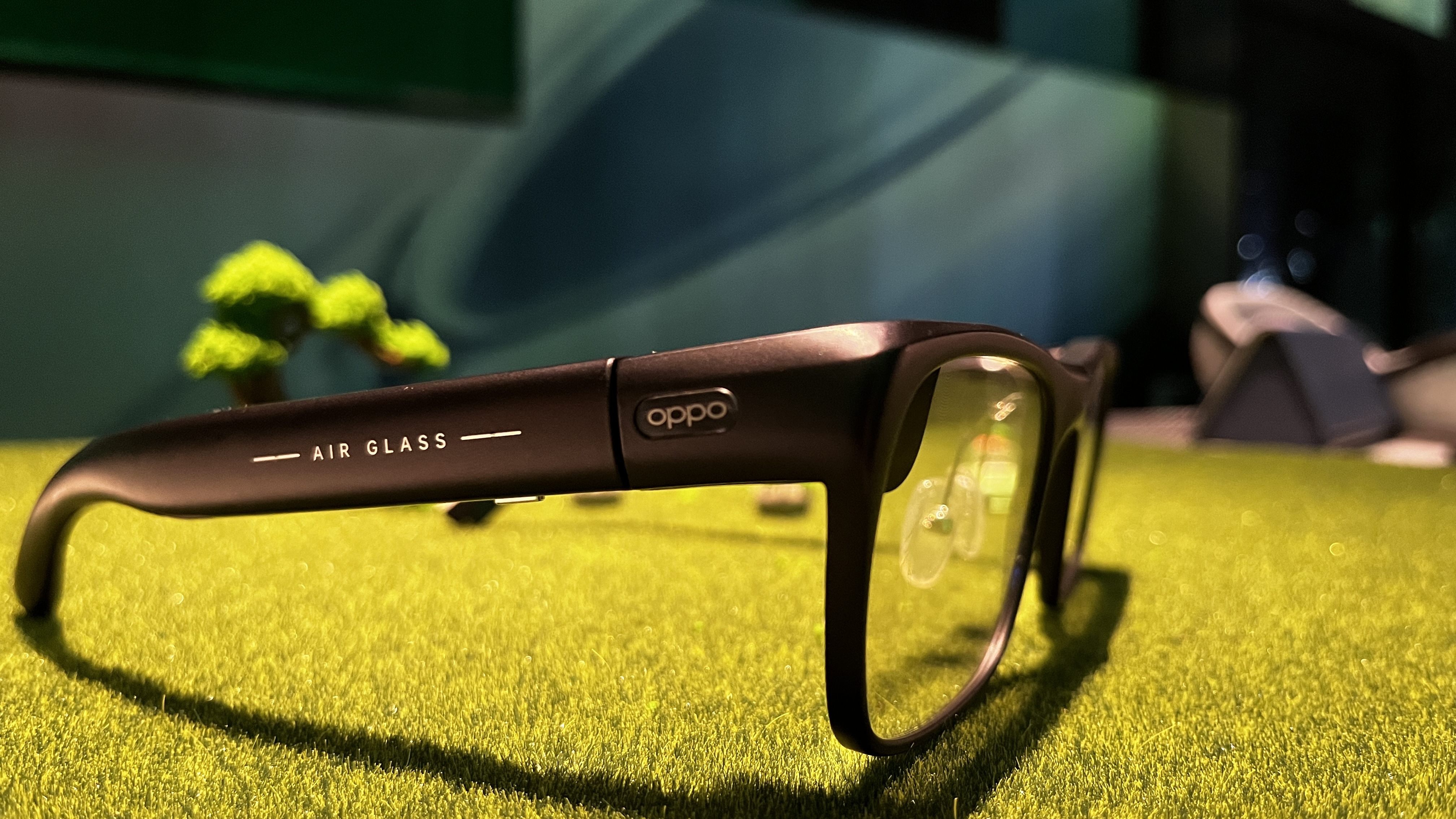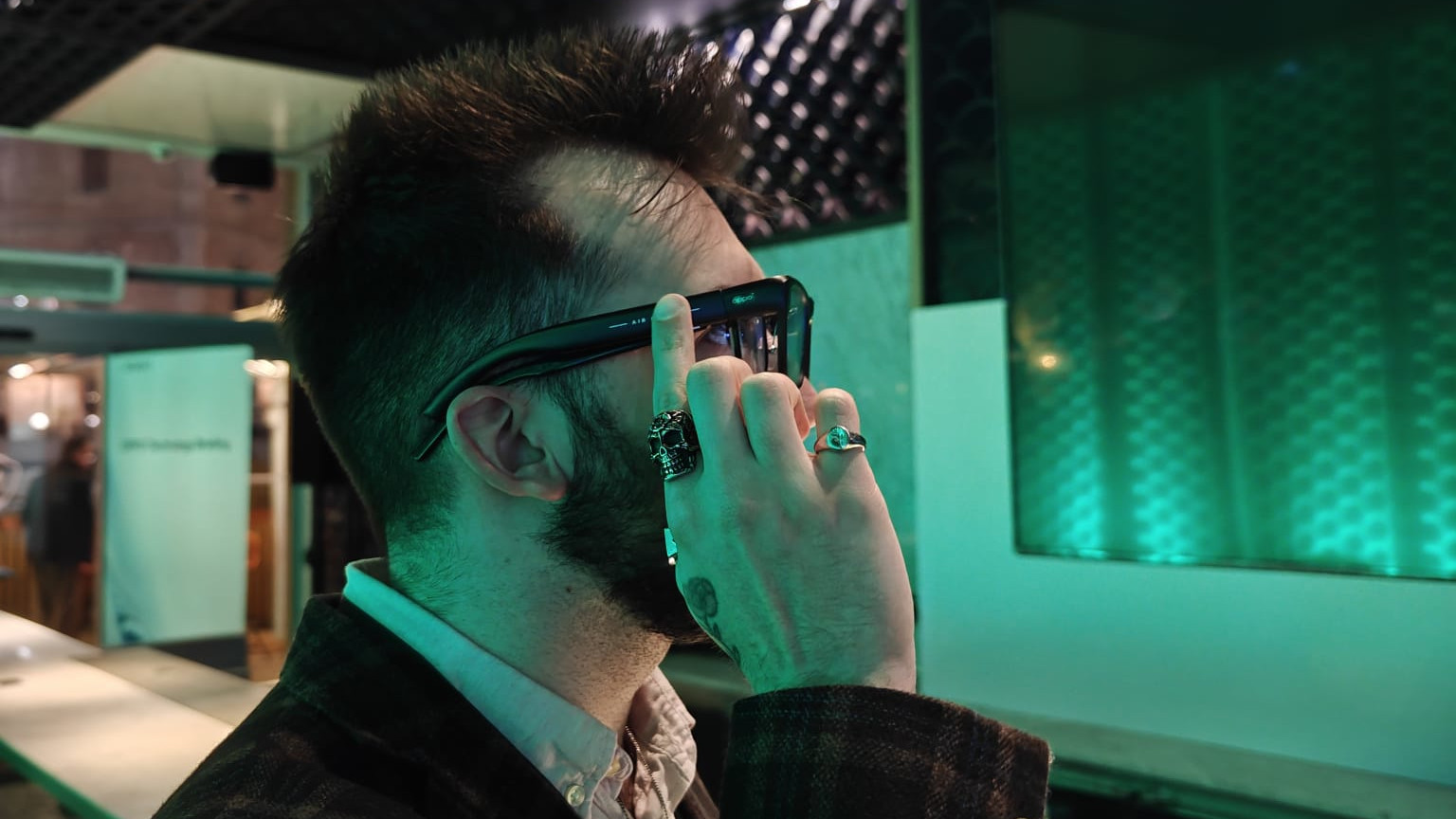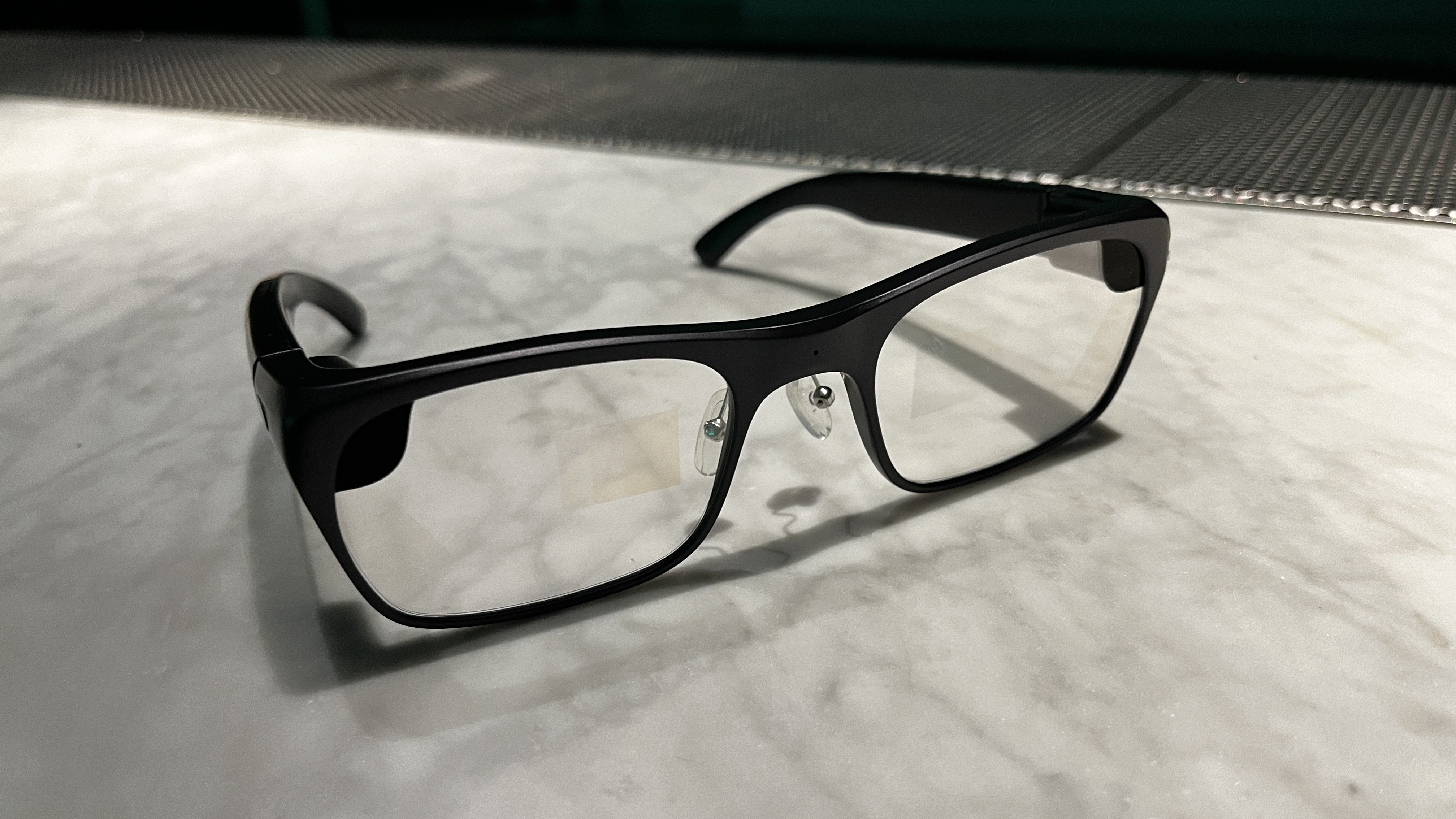
Having spent all of Monday on the show floor at Mobile World Congress, I found myself surrounded by the glitz and glamour of the technology industry. New goodies from just about every brand you can think of – and even some you can't – were on display to showcase the best these brands have to offer.
In all of that hubbub, one thing that really caught the attention of the crowd? A man walking by in an Apple Vision Pro headset. People swarmed to snap photos and videos, clearly in awe of the technology on offer.
It's certainly not the AR / MR / VR headset option I'd choose, though. For me, the new Oppo Air Glass 3 looks like the perfect solution – and after giving it a go at an event last night, I'm certain it's the headset for me.
Before I get into my experience, though, let's bash through some specs. The Air Glass 3 weighs just 50 grams, making it incredibly lightweight in use. It also features a display brightness of more than 1,000 nits, making this the best full-colour display of its kind.
A small touch window on the side of the device is used to control actions. You'll also find four speakers in the device, which acts intelligently to improve noise isolation and enhance privacy.

What is the Oppo Air Glass 3 like to use?
As part of an exclusive testing session, I got hands on with this device last night. The model used was a prototype, but showed off the design and the idea for how the device would work.
Using the touch panel on the right hand side of the device, I was able to scroll between windows. That included things like the weather, messages and even a book. In fact, the whole thing felt very smartwatch inspired. The windows felt a lot like the tiles you'd find on those devices, which was a handy way to approach such a device.
Sign up to the T3 newsletter for smarter living straight to your inbox
Get all the latest news, reviews, deals and buying guides on gorgeous tech, home and active products from the T3 experts
The reading function was also a really cool idea. Simple though it may seem, it's not something I'd found on other devices. It would make a lot of sense in places like airports or on trains, where users could read without losing the perspective of where they are.
But by far the most impressive part of this is the design. With AR glasses, there has always been a bit of a gap between what most people would find acceptable to wear in public, and what's on offer.

Right at the start of this story, I mentioned the furore that surrounded someone wearing an Apple Vision Pro. That was likely in part down to newness, but also because it's such an odd looking thing.
That isn't a problem with the Oppo unit. It simply looks like a pair of glasses. Save for having to double up with my own prescription glasses to test these out, there was nothing about the look which would have raised eyebrows.
Obviously, this is only a concept right now. With that in mind, it's important not to get our hopes up too quickly. These things could take years to come to market – if they ever do at all.
I certainly hope it does, though. We've seen a lot of different AR and VR headset options on the market – I've tested a lot of them – but for me, this is the first time it has come close to feeling both useful and stylish.
Make no mistake – this is the future of AR. And it's closer than it has ever been before.

Sam is an award-winning journalist with over six years of experience across print and digital media. As T3’s Senior Staff Writer, Sam covers everything from new phones and EVs to luxury watches and fragrances. Working across a range of different social media platforms alongside his written work, Sam is a familiar face for fans of T3. When he’s not reviewing snazzy products or hunting for stellar deals, Sam enjoys football, analog photography and writing music.
-
 This is the sound of BMW's upcoming Neue Klasse EVs
This is the sound of BMW's upcoming Neue Klasse EVsHas BMW cracked the problem of making EVs sound fun with its next-gen soundscape for its Neue Klasse cars
By Alistair Charlton
-
 Build unshakeable core strength with a kettlebell and these three exercises
Build unshakeable core strength with a kettlebell and these three exercisesAdd this to the end of your workout to fire up your midsection muscles
By Bryony Firth-Bernard